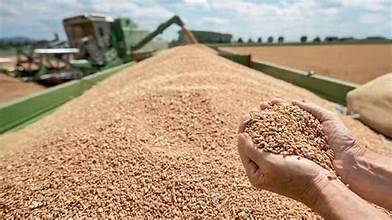
In a significant development, India’s wheat stocks have plummeted to their lowest level in 16 years, marking a decline of 10.3% compared to the previous year. This decline, observed since 2008, follows two consecutive years of reduced crop yields, prompting authorities to undertake record sales to bolster domestic supplies and alleviate local price pressures.
As of May 1, government warehouses recorded wheat reserves of 26 million metric tons, down from 29 million metric tons in May 2023. Despite this decrease, May’s inventories show an improvement from April, attributable to new season purchases initiated by the Food Corporation of India.
Challenges in wheat production have been exacerbated by higher temperatures, leading to diminished output in 2022 and 2023. Despite calls for import incentives or direct procurement from leading suppliers like Russia, the Indian government has opted to tap into state reserves for sales to bulk consumers, such as flour millers and biscuit makers, in an effort to stabilize local prices.
Since June 2023, the Food Corporation of India has sold over 10 million tons of wheat from state reserves to private entities, setting a new record. Notably, India’s wheat cultivation cycle involves a single annual crop, with planting occurring between October and November and harvesting starting in March.
While this year’s May stocks are lower than the previous year, they still exceed the government’s buffer and strategic reserve target. However, India faced challenges in meeting its wheat purchase goals in 2022 and 2023, followed by a slow start to this year’s procurement.
The context of global wheat dynamics includes India’s ban on exports in 2022 amid heightened demand due to the Russia-Ukraine conflict, contributing to a global supply shortage.


